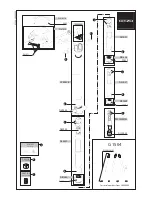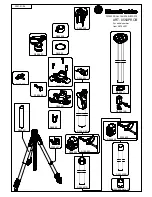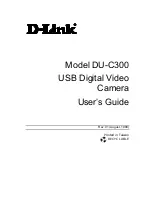
32
Menu Settings
All:
displays both frame guides and recording information.
Status:
displays only the recording information, such as f-stop number, frame rate, battery life etc.
Guides:
displays only the frame guides.
Off:
gives you a clean feed.
On Blackmagic Micro Cinema Camera, you can set HDMI overlays to 'on' or 'off'. Use the left and
right arrow buttons to select, then press the 'play' button to confirm your selection.
LCD Overlay
On Blackmagic cameras with a built in display, you can turn the frame guides on or off for the LCD
independently of the SDI/HDMI output. For example, you may want to view frame guides on the
LCD, but output a clean video feed over the camera's SDI/HDMI output.
Frame Guides
On Blackmagic cameras with a built in display, you can choose from several different frame guides to
display on your camera’s LCD. The frame guides can also be viewed on the HDMI output on Blackmagic
Pocket Cinema Camera.
On Blackmagic Micro Cinema Camera, frame guides can be viewed on the HDMI output or the composite
output. Frame guides include aspect ratios for various cinema, television and online standards, plus
a rule of thirds composition grid. Use the 'frame guides' setting arrow icons to select your desired
frame guide. Frame guide settings can be found under the 'monitoring' section.
HDTV:
Displays action and title safe regions of your image within a 1.78:1 aspect ratio compatible
with 16:9 HD television and computer screens.
4:3:
Displays the 4:3 aspect ratio compatible with SD television screens, or to help frame shots when
using 2x anamorphic adapters.
2.35:1, 2.39:1 and 2.40:1:
Displays the broad widescreen aspect ratio compatible with anamorphic
or flat widescreen cinema presentation. The three widescreen settings differ slightly based on the
changing cinema standards over time. 2.39:1 is one of the most prominent standards in use today.
1.85:1:
Displays another common flat widescreen cinema aspect ratio. This ratio is slightly wider than
HDTV 1.78:1 but not as wide as 2.39:1.
Thirds:
Displays a grid with two vertical and horizontal lines placed in each third of the image.
Thirds are an extremely powerful tool to help compose your shots. For example, the human eye
typically looks for action near the points where the lines intersect, so it's helpful to frame key points
of interest in these zones. An actor's eyeline is commonly framed along the top third of the screen, so
you can use the top horizontal third to guide your framing. Thirds are also useful to maintain framing
consistency between shots.
The frame guides setting on Blackmagic Cameras lets you
display overlays on the camera's LCD and SDI/HDMI output.
Scroll the menu to reveal
more Display settings.
Frame guides provide helpful markers so you can accurately
compose your shots for various television, online and cinema
aspect ratios, for example the popular 2.39:1 flat widescreen
ratio as shown above.
















































